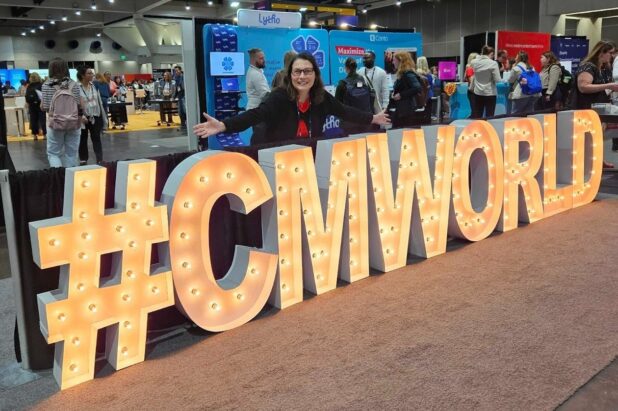As a marketer, one of your biggest fears is losing control.
Control of the message. Control of the conversation. Control of your own brand identity.
That’s what makes the rise of generative AI as a pivotal force in the B2B buyer’s journey so ominous. While we never have complete control over how our content is discovered and consumed, our ability to have any control at all is at stake as decision-makers increasingly turn toward automated, algorithmic messengers for comparing solutions and evaluating vendors. You might have noticed, but these generative engines — slick as they may be — are prone to getting the facts wrong!
Welcome to the misinformation crisis. We’re only getting started.
Ready or not, here AI comes
A recent report from Responsive found that 80% of global B2B tech buyers use generative AI as much as traditional search when researching vendors, with nearly a quarter (22%) saying they use it more.
At the same time, over 90% of US consumers express concern over AI spreading misinformation. And according to Forrester’s Buyers’ Journey Survey 2025, 19% of business buyers said the inaccurate or misleading results from AI systems made them less confident in their purchase decisions.
Alas, despite recognizing the pitfalls, decision-makers aren’t turning away from LLMs anytime soon: Forrester’s data found that “95% of B2B buyers plan to use generative AI in at least one area of a future purchase, and over half say it led them to consider more or different vendors while saving them time in their purchase process.”
B2B marketers can’t stop the insatiable adoption of AI tools like the ones used to create the image for this blog post. But we can play a role in helping these tools provide better information, as well as equipping buyers with resources beyond what AI can generate to make decisions more confidently.
Taking control of your brand story in the age of AI search
Is AI lying about your brand? When I ask the question, I don’t mean it nefariously — the robots don’t know any better. When asked a question, LLMs will quickly retrieve whatever information they are able to find and rapidly vet.
If they can’t find the info from you, they might pull it from a third-party site or (gulp) competitor. If they can’t find the info at all, they might hallucinate it. Studies show that popular generative AI platforms hallucinate between 2.5% and 8.5% of the time, and for some models the rate exceeds 15%.
This misinformation crisis demands that B2B marketers focus on three things:
- Understanding your current AI footprint and opportunities
- Optimizing for visibility and accuracy in LLMs
- Offering magnetic experiences and resources outside of AI platforms
Understand your current AI footprint and opportunities
Before you can improve how your brand appears in generative AI engines, you have to understand where you are today.
Right now, most marketers lack visibility into how their brand, products and competitors show up in AI overviews and conversational search. Generative systems like ChatGPT, Gemini and Perplexity are drawing on a constantly changing mix of sources — sometimes including your owned content, sometimes not. Without an audit, you’re essentially guessing how these models perceive and represent your business.
New tools and analysis techniques are emerging that give marketing teams a clearer, data-backed picture of their AI footprint: which models are surfacing your brand, what narratives are attached to it, and where misinformation or visibility gaps exist.
[CTA: Get started with [TopRank Marketing’s AI Overview Audit and Consultation], designed to help brands assess their presence across generative engines and uncover immediate optimization opportunities.]
Optimize for visibility and accuracy in LLMs
Once you know how AI sees your brand, the next step is learning how to improve what it sees and shows. Generative engine optimization (GEO) is an evolving practice, distinct from traditional SEO. As our clients and friends at StackAdapt recently wrote at MarketingProfs:
“Unlike search algorithms, LLMs are closed systems with different training sets and behaviors. That means you can’t fully ‘optimize’ for them — you have to experiment.”
That experimentation needs structure. Smart marketers are developing data-driven frameworks that test prompts, monitor AI output accuracy and connect insights back to owned content and schema improvements. You’re not trying to hack or trick the model, but rather making your brand’s data and expertise more accessible, verifiable and valuable to the systems that power it.
Think of GEO as iterative learning. The more you measure and refine your signals — from well-sourced content and structured markup to consistent brand language — the more likely these engines are to reference you correctly, and confidently.
“It’s not enough to rank for keywords; your content needs to answer the questions buyers are asking with credible, context-rich, intent-driven answers and show up in the sourcing and citations included for transparency. Leverage intent mapping, topic clusters, and structured data to help shape and reinforce AI model reasoning.” – Jessie Johnson, Forrester
Offer magnetic experiences and resources outside of AI platforms
No matter how much you analyze or optimize, there will always be limits to what you can control inside large language models. That’s why the ultimate advantage lies outside them.
Your owned platforms — your website, social media, thought leadership hub, influencer ecosystem and research library — must become compelling destinations. When buyers do encounter you through AI search or overview summaries, these experiences should pull them in and make it clear why your brand offers more than a generic answer ever could.
That means doubling down on original research, distinctive expertise and human voices that algorithms can’t replicate. It means cultivating relationships with industry influencers and communities that validate your credibility beyond machine-generated results.
In short, make your brand the Best Answer, not just the one an AI happens to spit out. That’s how you reclaim control: not by fighting the models, but by giving audiences something so valuable, so authentic, that they choose to step beyond the overview and into your world.
Avert the misinformation crisis with expert support
B2B marketers and brands need to take control before they lose it with proactive measures to adapt in the age of AI search. Partnering with an expert who understands this evolving landscape and how to best position your brand within it is an essential step toward staying visible in your buyer’s journey.
Ready to rise above as the Best Answer? Grab our playbook to get started, and reach out if you’re ready to put it into action.



